#Parasitic cone
Explore tagged Tumblr posts
Text

Mt Ngauruhoe, New Zealand: Mount Ngauruhoe is a volcanic cone in New Zealand. It is the youngest vent in the Tongariro stratovolcano complex on the Central Plateau of the North Island and first erupted about 2,500 years ago. Although often regarded as a separate mountain, geologically, it is a secondary cone of Mount Tongariro. Wikipedia
250 notes
·
View notes
Text
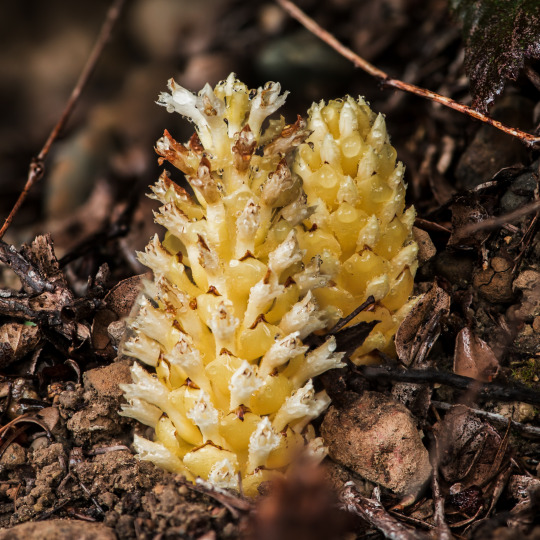
Small Ground Cones - a species of parasitic plant native to western North America from British Columbia to northern California, which grows in wooded areas.
#artists on tumblr#original photographers#original photography#hiking#pacific northwest#nature#nikon#washington#pnw#orofeaiel#small ground cone#parasitic plant#forest finds#plants#goblincore#forest floor#yellow#naturecore#poque
29 notes
·
View notes
Note
Trick or Treat!

I hope you’re not a manzanita shrub because you’re getting a California ground cone
#context: ground cones are parasitic to manzanita#everyone who trick or treats my inbox will get something from the woods
1 note
·
View note
Note
Hi Ked! Having chickens when I finally get my own place has been something I've wanted for a while (am currently putting it on hold despite in the near future acquiring said own place due to H5N1). However, I have become a little enamored of quail recently in comparison. My goal would be to have eggs and fluffy yard buddies, do you recommend either one over the other?
If you want birds that can free roam your yard, it can't be quail. They are game birds, like pheasants, and will just leave (or get immediately eaten by.... everything, but especially hawks and domestic cats.
If you don't mind having them contained, then 100% quail are a better option right now.
Quail don't take up nearly the same space; an average sized quail tower takes up approximately a 2x3 foot space, and depending on how many levels you have and how densely you populate them can hold anywhere from 15-40 quail. That amount of space cannot even house 1 chicken long term.
Quail are not NEARLY the same initial investment; on average people end up investing around $200-500 in quail equipment/caging/birds depending on how into it you want to get, and $2k+ in appropriate chicken equipment/caging/birds. These costs can vary greatly depending on how handy you are and what connections you have to acquire scrap materials, or how fancy you want to get.
Since quail are not kept on raw ground, they have MUCH fewer health problems on average- they rarely get parasites, they rarely pick up bacterial infections, they rarely pick up anything viral (and if their caging is kept in a more enclosed/covered space there is almost no chance of them picking up HPAI). Since they're contained, there's not very much chance for them to injure themselves (although like any bird, if there's a way they have the will to find it).
Their eggs are more nutritionally dense than chickens. You can compare nutrition per gram anywhere online.
They're (in my experience) more consistent layers than chickens; give them light and feed, and they will lay daily year round, only taking a break to molt in the fall.
Quail's full lifespan is shorter than chickens. This may seem like a downside, but the productive years for a chicken are generally 2-5 years, with a lifespan that should be 7-12 years. Quail have the same 2 years of production, but on average only live 3-5 years, so even if you don't want to butcher the spent hens (which most people do), you aren't caring for nonproductive birds for many years.
Quail are easy to butcher at home with almost no equipment- all you need is a hefty, sharp pair of kitchen shears, a 5g bucket (with or without a liner), and some ice water in a big bowl. No plucking, no scalding, no killing cones, nothing special for cleaning. They can be packed for freezing whole in vacuum sealed sleeves.
If you get or build rollout cages, the eggs gently roll to the front of the cage and "out" into the tray, where they can be picked up clean!
If you get or build wire-bottom cages, you don't technically have to buy bedding. Cost efficient! You can provide resting boards or have solid-bottom portions of the cage, and giving them a sand bath bin will be REALLY exciting for them.
Coturnix quail come in such a huge variety of color and patterns that you can surely find some type you like.
Both species can come with aggression issues- it takes FAR less time to breed it out of quail because they hit breeding age in a matter of weeks, not months.
The downside to quail is that most coturnix quail are not terribly cuddly. you might be able to imprint one (I did once, because my pigeons hatched him and then didn't like that, so I took Robert in), but the majority will just be cute look-don't-touch birds. They are FASCINATING to watch though, so it works out imo.
the downside to both species is. the roosters crow. terrible noises in both cases. I couldn't handle chicken roosters.
Anyway, I think that in all honesty, when MOST people are considering getting into chickens, what they ACTUALLY want is the experience of having quail. Small, cute, easy to handle/raise, genetic manipulation through generations of selective breeding easy to hatch, cute eggies. There's a LOT of people getting into chickens right now because they think it will be a solution to the expensive eggs in the supermarket, but it won't be. They'll end up spending more on the chickens than they ever would have on just getting eggs, and throw a stone in a chicken group on fb and you'll hit 17 people who have had horrific health issues related to parasites, illness, injury, predation, etc.
Meanwhile.... quail groups are largely chill and questions are usually about colors and feed/housing (since most of the problems are bad feeding habits or caging, or genetic issues).
#asks#chickens#quail#I kept chickens for like a decade#and I finally had to admit it just was not for me#Quail for me had a rough start with the quality of the birds I got#but once I corrected that.... I am having so much fun#the birds are SO cute#and they grow up so fast I don't have to deal with babies forever#they are SO much nicer#not that chickens are not great but I think you gotta REALLY be into it to do it well#and a lot of people get into it on a whim because chicks are cute#and then they turn into 3-8lb velociraptors and people are in over their heads#with waayyyyy too much invested to just give up so they spend a LOT of time and money trying to keep their heads above water
1K notes
·
View notes
Text


It was never a common species, the blue-grey warbler that locals called the jack pine bird. A belated discovery among American birds, it was undescribed by science until the mid 19th century—and then, known only on the basis of a single specimen. The bird's wintering grounds in the Caribbean would eventually fulfill the demands of collectors and museums, but the intricacies of its lifecycle remained a mystery for decades, the first nest only found in 1903. As the already-rare bird became rarer, people could only guess at why. There were just so few birds to look for, their breeding habitat inscrutable amidst the dense, impassable woodland of their Midwestern home. The one clue was the most apparent thing about the bird: its affinity with the jack pine (Pinus banksiana).
Over time, more nests were found—not in the eponymous trees, as might be expected for a songbird, but on the ground at their feet. Data points converged, leading to the realization that not only did the bird nest almost exclusively in proximity to the scrubby pines, but only utilized trees that fell within a specific range: new growth, between five and fifteen feet tall, with branches that swept shelteringly close to the ground. Subsequently, it would be noticed that the greatest volume of specimen collection for the bird had corresponded with years in which historically significant wildfires had impacted the Midwest—fires that, for decades afterwards, had been staunchly suppressed. The pieces fell into place, like jack pine seeds, whose cones open only under the heat of a blaze.
With the bird's total population having dwindled to the low hundreds, a program of prescribed burns, clearcutting, and replanting was instituted, with many acres of land purchased and devoted to the preservation and maintenance of suitable breeding habitat. Concurrently, efforts were made to protect the vulnerable bird against brood parasitism by the brown-headed cowbird.
When the first federal list of protected species was put forward in 1966, the name of the small grey warbler was inscribed beside birds such as the Kauai ʻōʻō and the Dusky Seaside Sparrow.
The ʻōʻō, last of the genus Moho, would be removed from the list in 2023 due to extinction, after thirty-six years without a sighting.
The endling Dusky Seaside Sparrow, a male named Orange Band, would die of old age in captivity in 1987, with his species being delisted three years later.
in 2019, fifty-two years after the creation of the Endangered Species Protection Act, the name of Kirtland's warbler, too, was removed from the list: it had been determined that, with a population now numbering nearly 5000, the jack pine bird could be considered safely stable.
Conservationists continue to work to preserve the breeding habitat of Kirtland's Warbler in the midwestern US, as well as its winter roosts in the Bahamas and neighboring islands (though selective logging has replaced actual burning in recent years, due to the dangers posed by unpredictable fires). It's the kind of effort that it takes to undo the damage we've caused to the planet and its creatures—the kind of hope that we need, to not give up on them, or on ourselves.
-
The title of this piece is Prescribed Burn (Kirtland's Warbler). It is traditional gouache on 18x24" watercolor paper, and is part of my series Conservation Pieces, which focuses on efforts made to save critically endangered birds from extinction.
#kirtland's warbler#conservation#bird art#extinction stories#bird extinction#endangered species#series: conservation pieces
1K notes
·
View notes
Text
🪶 dream ossuary rookanis enjoy 🪶
Lucanis wakes with a start, with the unpleasant lightning strike through the body after dreaming of falling.
Only he doesn't find himself back on the raised courtyard between the big statue and the Lighthouse.
Instead, he finds himself back in the frozen, cone-shaped cell, so deep underwater that even the suspiciously clean air feels suffocating. He's so cold even the skin between his asscheeks stands up in goosehives.
Probably because he's naked, save for the shredded fabric that he snatched from the hips of the poor soul in the cell next to his, only moments after she (Nastia, he reminds himself) had succumbed to her starvation and her hunger demon had burst out of her like filling from an overcooked pie.
Not his finest moment, there.
Lucanis rubs his forehead with a sigh.
Of course he's still here. This entire business with blighted gods and archdemons and remote brain-parasites did always seem a tad too absurd to be real.
NO! Spite shrieks. He's circling him like a vulture waiting for its food to die. Gods were real! We killed them. We tore into Ghilan'nain with our teeth! We chased Elgar'nan into Minrathous! Stuck Solas to the Veil for snatching our Rook! OUR ROOK IS REAL. SHE'S SLEEPING, RESTING. IN OUR ARMS. WHERE SHE BELONGS. OUTSIDE YOUR STUPID STUBBORN SPONGEHEAD.
As if she'd walked out of the latest romance serial, took one look at his miserable self and thought I have to have him.
NO REASONING WITH YOU HERE. RESOLVE TO BE MISERABLE. WHEN WE COULD BE FREE. FREE AND - You're surprised? There's a reason you were once Determination, before we joined.
Spite rams his elbow into the back of Lucanis' head, then dissolves into thin air.
Lucanis huffs warm air into his palms, rubs them together for friction and then wraps his hands around his toes.
There's a commotion, somewhere between the space behind his eyes and the back of his head, and he feels as though he's prodded at in another plane of existence.
SEE? Spite pushes at somebody until they kneel down in front of him. ROOK IS REAL. If she were real, she wouldn't be in here with us. She'd be far above the surface, as she should. I WOKE HER. I BROUGHT HER.
Lucanis dreads what his demon might have told her to pull her from her precious rest and into his mind. Again. Judging their trajectory lately, it likely wasn't Help us, he listens to you this time.
"Hi." There's hands on his cheeks now, and whoever it is that Spite conjured up does look exactly like the woman from his escapist dreams. Her eyes are puffy, rimmed in red - has she cried?
"What's wrong?"
Oh, so. Only real if for you to fix? That's what's happening? Shut it. MAKE IT MAKE SENSE. THEN I SHUT IT.
"Spite brought me. He thinks you went back."
Lucanis can't bite back his dry chuckle. When he pointedly looks around, her hands slip from his cheeks, cradling his jaw now.
"Evidently, I did do exactly that."
"Has.. Did something happen today, before we went to sleep, that brought you here?"
"You don't need to do this. I don't need my own subconscious trying to fix me."
Fingers twirl the ends of his hair.
"I've been here before, remember? Spite brought me then, too. He - we - don't want you to feel as though you're stuck in here by yourself."
He doesn't need to tell her he did not willingly walk in here, that sometimes he still just finds himself back in his cell. She knows. She knows intimately, by virtue of caring to know him.
"I shouldn't keep returning here," he manages, eventually. "You broke me out. I'm done with this place. There's nothing left for me, here. Not even death."
When Rook stopped being a figment of his imagination, or when she'd shifted to rock the both of them left to right to left with her cheek by his hairline, he doesn't know.
"Maybe this place isn't done with you."
Letting this, however accurate and plain to see, suggestion sit with him makes him nauseous, like trying to eat after having been hungry all day.
"How do I stop coming back here, Rook?"
Her silence and her hands in his hair, strangely grounding him into the reality of this Fade-dream with the nails on his scalp, are answer enough.
Eventually, she sits back down, cross-legged, takes his hands.
He knows what that means; I have an idea.
Do it! Spite leans over her shoulder, pushing her deeper into her hunched posture with both hands on her back like he was trying to mount a horse from its backside. Rook has good ideas! Rook is smart! She will fix us. Splitting us is not in her repertoire. Breaking us out of here is!
"Well, for this specific instance, there's multiple options of what we can do," she starts. She's barefoot, too, the tops of her feet pushing into his soles. "If you'd rather be alone, I can leave - Spite won't like that, and neither do I, frankly. I don't want to leave you alone here."
She must be real, Lucanis thinks after all. How else would he know the way the space between her brows creases means But your feelings in this matter more than mine?
"But if that's what you need, you shall have it. We could leave this place together, too. Or, we could stay here together. Whichever you want. Whatever you need. If it's for me to give to you, you will have it. I promise."
He looks up from their feet, when her hand settles soft and warm and startingly familiar on his jaw, her thumb through his beard.
"I.. I can't get up."
Rook nods.
"Would you like me to stay?"
"I... If you'd rather leave-"
"I know. That's not what I asked."
Her eyes are wide and soft and endlessly loving.
"Stay. Please. Just a little longer."
"Of course."
It should be intimidating, the way she rises to stand before him, fingers working the cord that holds her dressing gown closed.
Were it anyone other than Rook, he would be, deep down. He'd never display it, of course, but he'd still feel it.
With her, though, he can freely display his - concern. Why is she undressing? In the prison of his brain?
"Rook, no. You're barefoot. We're encased in a cone of ice. You'll be so cold. Don't take off your dressing gown."
But he doesn't fight her, and the soft yellow silk-lined robe drapes warm and comforting over his shoulders.
"I am wearing more than a loincloth. I'll be all right."
Even here, somehow, in this nightmare prison that his mind keeps returning to, it's baffingly easy and natural to settle against her. She willingly offers her warmth to him, shifts with him like that's all she's made to do.
Eventually, he's curled up on his side, covered up to his eyes by the gown, her right hand rubbing his arm through the fabric and the other petting his hair.
As he closes his eyes, there's the start of a giggle in Rook's throat, hastily bitten back and covered with a breath.
"What?"
"Your ears are so small. And round. Small and round and cute."
"Is that.. good?"
"I think so. I tried to picture you with ears like mine and - no. Your ears are perfect like this."
"Thank you?"
Her body curves above him, and her lips press against his forehead. It must be a strain in her neck, how she's curling to meet him with his head in her lap.
But when he attempts to rise, to meet her halfways her hand slips from his arm to his chest and pushes him back down.
So he shifts until all his weight isn't squarely on the joint of his shoulder. Closing his eyes again under her gentle touch and soothing warmth is an easy thing. Even here.
Were he not so confused and tired and therefore sopping up her soul as though the Ossuary turned him into a wet biscuit, he might be a little scared of all that.
"How do you like your eggs?"
"I'm sorry?" He almost can't hear it, his left ear cushioned by her thigh on all sides, Spite trilling happily at her scratching over his scalp in the other.
"When we wake up, I'll make you breakfast, for a change. Something nice and simple."
"You don't have to. I know you don't enjoy cooking."
"I want to, Lucanis. Let me do something for you, just this once." He knows she'll say the exact same thing she resolves to cook for him the next time. And the time after that. And probably for the rest of all time, if she'll have him. "So: how do you like your eggs?"
"Sunny on bread."
Her thigh shifts under him, and her lips press against his right ear.
"Sunny on bread you shall have."
Instead of leaving, however, she settles down beside him, her thigh still cushioning his head, the crown of hers barely in his lap.
"After you wake up. After you have a long, long, well-deserved rest, and wake up in my arms at the Lighthouse. At home."
She says more, but he soon falls away into sleep, when she drapes her dressing gown over him like a blanket once more and reaches for his hand under the fabric.
-
He wakes again, before her, this time, though his face no longer lies squared in her lap.
There's no blanket covering him - it must be somewhere near the end of the bed - but Rook's body against his back is enough to to warm him through an entire Age of winter.
Her fingers are hooked into the seam of his pants, her breath warm on the back of his neck.
Sunlight filters through the massive fishtank, into the hidden corner where their bed sits.
A marvel, that. Their bed. For her and him.
See? Real. All of it. You're right. And thank the Maker for that.
A bare legs hooks over his hip.
Lucanis closes his eyes again.
🪶
directly influenced by this post by @lunammoon <3
@lanafofana this may be of interest to you
@manhattenstops p e r c e i v e
[~rina]
#rookanis#rook x lucanis#lucanis x rook#lucanis my beloved#lucanis dellamorte#Lucanis#lucanis dragon age#dragon age lucanis#spite my beloved#spite#spite dellamorte#spite dragon age#dragon age spite#dragon age#dragonage#dragon age the veilguard#veilguard spoilers#rook#rook de riva#de riva rook#antivan crow rook#daisy rook#rinawrites#rinascreamsaboutbioware#no beta have adhd
175 notes
·
View notes
Text
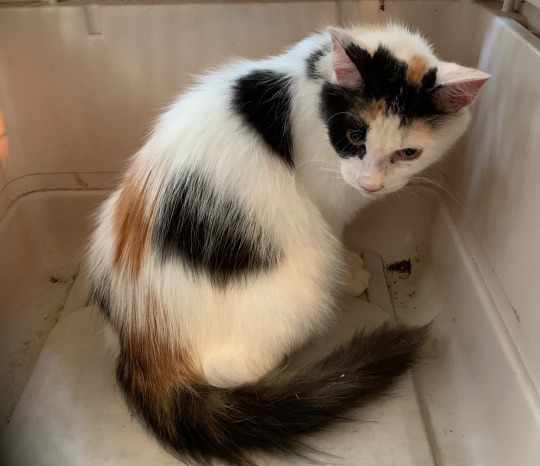
it’s literally only been like 3 weeks since she weaned the jellybeans and when she was in for her spay they discovered she was already a week pregnant again. please slut-shame her.

get fucking fixed idiot
#when did you even have the time!!!!!!!#no wonder kitten season is such an explosion that’s such a short turnaround wtf#no more jellybeans for you young lady#yard cats#(she is now sleeping in her recovery enclosure)#(it took her under 4 hours to remove her cone which is honestly impressive)#anyway she had fleas worms and earmites but got treated for all of those so she’ll be feeling much better soon#and besides the standard issue parasites she’s otherwise in great health!! :)#cats man
48 notes
·
View notes
Text
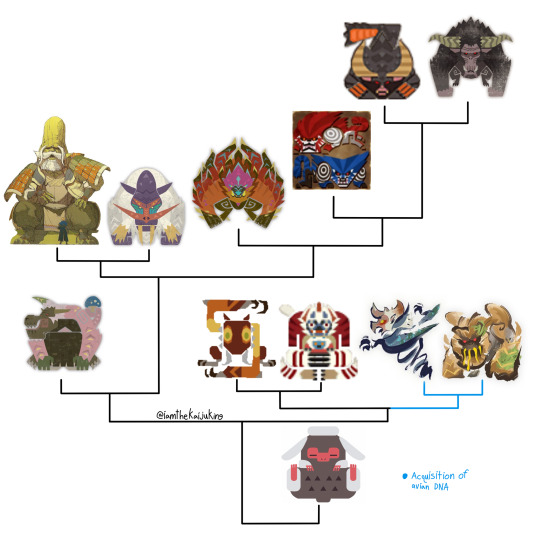
My phylogeny of the cursorial monkeys as of the release of Wilds
Gold & Pearlspring Macaque: Two species of monkey native to the hoarfrost reach.
Both species are small primates that usually take shelter in the underbrush and in caves scrounging around for small animals, and have thick fur to combat the cold. But sometimes this isn’t enough so they risk basking in hot springs to stay warm. The Pearlspring species is numerous and social, forming large family troops. The golden species is much rarer but seems to be welcomed as the Pearlspring make no efforts to drive them off.
Both species have long feet and when resting have a plantigrade leg position, but when moving they switch to digitigrade, which is a hallmark of this entire family.
Despite their appearance resembling lemurs or loris, they and by extension all members of this group are old world monkeys with close relation to the tribe Papionini (mandrills, macaques, baboons, geladas, etc). But the group itself is likely older than them.
True cursorial monkeys
Congalala: An infamously stinky species with vibrant fur.
These monkeys are somewhat social and forage together, but don’t form especially strong bonds with each other. Congas are primarily fungivores that also eat plant matter but especially fruits. They spend a lot of time digesting their hardy meals with their large and extensive digestive system which is capable of slight hind gut fermentation. Their tails are prehensile and have a padded tip for picking up food. Their mouths are especially gummy, and in fact all but the canines and incisors on their mandibles are blocked from view by their extensive gums. This gives them a slight hippo look.
For self defense Congas have large claws derived from grooming claws that can give a nasty slash and their faces and rear can flush red with blood as a warning when angry, but this pales in comparison to their other defense. The colon of the Conga is formally referred to as the Fart Chamber, and is rather large and capable of retaining waste and gas. In self defense a Conga will release the contents of its fart chamber and the foul smell and fecal matter is enough to drive away almost any attacker. There is traces of sulfur that give it a particularly strong smell and make it hard to wash out.
The iconic pink fur of Congas seems a bit odd, but is actually a vital method of anti parasitic defense. Many tropical species such as birds use bright colors in their integument as a deterrent against external parasites.
The males known as Congalala are much larger than the females and more solitary, but a Congalala usually isn’t far from a troop of Congas he’s claimed as a harem. Males have long fur on their heads that they gel into a long curved cone using the juices from the fruit they eat. This is something done to show fitness to other females, and males with bigger and more impressive cone heads are considered more attractive.
As a consequence of their more solitary lifestyle, Congalalas step up their chemical defenses. Aside from their fart chamber, they also have a small pocket in their esophagus next to the entrance of their stomach called the Burp Chamber. When eating various toxic fungi they can actually store some of the debilitating chemicals along with gas within the burp chamber to then be regurgitated at attackers.
Some particularly experienced Congalala have found ways to dye their hair as well as gel it, and these individuals have died their entire bodies a number of different colors in order to further impress females. Green is the most common but some orange individuals have been spotted.
Blangonga: An arctic species of monkey with a much more carnivorous diet.
Blango are well adapted to their environment with thick white coats that cover their bodies, except for their extremities and bald heads. They form troops to hunt as a pack to capture prey which they dispatch via their massive canines. Much like Mandrills they have distinct blue faces with snout ridges. In defense they can spew water which freezes in their cold habitats.
While most of their caloric intake is meat, Blango must occasionally consume plant matter. As monkeys they are incapable of producing vitamin C, and must gain it through food. Vitamin C is common in fruits and vegetables, but these are not common where they live, so any plants they see they will eat without hesitation to avoid scurvy. Troops may seasonally migrate during warmer periods to gorge on fruits.
Males are referred to as Blangonga and aside from size they have noticeable cranial differences from females. Their upper canines form incredibly long sabers, and they have two long bone spikes on their skulls above the canines as well as a distinct mustache growing from the cheeks. Just behind their head is also a lump of fat. These tusks, mustaches, and head boobs make them very desirable to females, and a single Male may command an entire troop of Blango. This does not mean that Blango are loyal though, as they will abandon a Blangonga that receives facial wounds that cut their mustache and breaks their tusks. These abandoned Blangonga do not survive long.
A desert subspecies exists called Copper Blangonga, which has a brown and tan coloration. They do not regurgitate water in defense as it does not freeze in their hot habitat. They’re also solitary and possibly do not possess sexual dimorphism. It’s possible that after the end of the last ice age a population of Blango became stranded in the old desert.
The dental formula of Blangonga perfectly matches with old world monkeys, with the only weird thing being that the first premolars are sharp like sideways triangular incisors. Likely an adaptation for their higher intake of meat.
Wyverians: A sapient species with long lifespans that closely resemble Homo sapiens.
It may be controversial to place them here as Wyverians hold a firm belief that they are descended from wyverns (although what kind is never specified), but a number of anatomical features say otherwise. A belly button and breasts present in many individuals firmly places them as placental mammals, and their anatomy is firmly simian. They nearly perfectly resemble humans except for their four fingered hands and feet, and the fact that they can have digitigrade legs and grow bigger than humans.
It’s these limbs that are the biggest tell as they match perfectly with the cursorial monkeys. But why lose their tails and evolve to be upright? Perhaps it could be to better free up their arms for tool use, and as they oriented their bodies vertically the tail offset their balance and was lost. Much like humans, this upright posture meant the head was held up by simply sitting on the neck vertebrae and not be held up by neck muscles that attached to the cranium. Thus allowing their brains to expand.
Many individuals can grow to astonishing size and males can become especially enormous and grow a distinctive domed head possibly composed of firm fat. The biggest known Wyverian is His Immenseness, who perfectly exemplifies these traits. These traits could perhaps be an evolutionary holdover from their sexually dimorphic ancestors who had keystone individuals in their troops.
Wyverians also live unnaturally long lifespans, rivaled only by the Actinistian elder dragons. It’s unknown why they possess such ludicrously long lives, or why it would even be necessary evolutionarily. But allow me to present a theory.
We know that many ancient civilizations have fallen in the world of monster hunter, and some especially advanced ones had access to genetic engineering. Wyverians typically inhabit the upper echelons of society or more academic spaces, with exceptions such as blacksmiths. It’s rather likely that this is a holdover from the ages long lost, and it’s not impossible that Wyverians may have gifted themselves long lives as members of the ruling class. Food for thought.
Ajarakan: A volcanic species that decorate themselves in ore that they heat up.
Ajarakan, Rajang, and their closest relatives form a family of long snouted cursorial monkeys that ancestrally dwelled in volcanic environments. This ancestor had a very high heat tolerance and consumed minerals to enable its higher degree of biomineralization than what’s standard for monsters.
Ajarakan itself deposits most of its ingested ore on its dorsal side, which form large flame-like structures. In defense they use friction via beating their tails against their backs and rubbing themselves against the ground to heat up their ore to the point of glowing with heat. They can get so hot that they melt some rocks on contact.
Ajarakan are noticeably more arboreal than their relatives, and have no trouble navigating their environment vertically. To aid this they have very specialized hair on their hands. Their palms and fingers are like those of geckos and work the same way, being covered in thousands of hairs arranged in lamellae. This structure takes advantage of Van Der Waals forces much like the feet of spiders and gives them unparalleled grip.
Ajarakan have minimal sexual dimorphism and are largely asocial, but the population native to the oilwell basin form coalitions during the firespring to look out for Nu Udra. The house sized octopodes have a particular distaste for the monkeys as they are the only native species capable of reaching and eating their eggs.
Ajarakan’s dentition on their top jaw has the same amount of teeth as old world monkeys, with 16 teeth. Standard fare, 4 incisors, 2 canines, and presumably 4 premolars and 6 molars. So a dental formula of 2.1.2.3.
The bottom jaw is a little more unusual with 4 incisors, 2 small canines grouped with the incisors, 2 premolars that have taken the role of canines, and presumably 4 more premolars and 6 molars or 2 more premolars and 8 molars. So the dental formula for the lower jaw would be 2.1.3.3. or 2.1.2.4. The grouped together incisors and canines are similar to the condition on Rajang’s upper jaw, which might indicate that the ancestors of this group had tooth combs on their top and bottom jaws, and the first premolars took over the duty of canines.
Gougarf: A magnetic species with two distinct phenotypes.
Gougarfs are monkeys that ingest ferromagnetic metals and incorporate them into their tissues and give themselves a magnetic charge.
While the species itself lacks sexual dimorphism, there are two phenotypes. The blue Rey Gougarf known for their more wolf-like face and sharp V-shaped arch of fur on their backs. And the pinkish red Lolo Gougarf which has a pushed in bulldog face and rounded mane. These two different types have opposite magnetic charges and will work together to exploit this.
The species is very poorly understood due to the fact that Mezeporta hunters don’t like hunting them.
Voljang: A sister species to Rajang with ore infused armor that resides in volcanos.
Voljang are very rare but seem to have similar abilities to Ajarakan, even using friction to heat up their bodies. They lack the electrical abilities of Rajang.
Not much else is known.
Rajang: The most infamous species on this list, many hunters have been mangled in their attempts to take down this raging monkey.
Rajang are rare and usually found in habitats with extreme temperatures. Their diet primarily consists of meat. The species is violently asocial and doesn’t have sexual dimorphism. The large horns of Rajang sit on the rear of the skull roughly where a good chunk of the temporalis muscles would normally attach, so it is likely that Rajang (and by extension Voljang) have sacrificed surface area for jaw muscle attachments for these massive horns. The horns themselves are primarily defensive with slight display purposes. The bigger the horns on a Rajang, the less other Rajang will want to mess with it.
The most famous feature of the species is their brutal strength and electricity. Rajang ingest conductive ores. Usually this is copper, but if available they prefer gold. These metals are partly stored in their muscle fibers, and the muscles in their forearms have been compared to metal. These metals both transfer the immense electrical energy they produce to different parts of their bodies, but also store some of it as well. When excited their fur glows a bright golden thanks to symbiotic microbes. Ordinarily these bacteria are hitchhikers only found in Rajang fur, but when the monkeys must defend themselves they are capable of electrogenesis and adding to the monkey’s power as a way of earning their keep. This immense electrical energy is regulated thanks to a ganglion present in the tip of the tail. If this ganglion is damaged or severed then a Rajang loses its ability to regulate its powers and its electrogenesis becomes self destructive. These individuals are known as Furious Rajang.
The disproportionate strength of the species may be possible due to their electricity. The way this electricity interacts with their muscles may grant them conscious access to hysterical strength.
Rajang have a distinct taste for the rhino Kirin, or rather their horns. The minerals and compounds present in the alicorn is vital for the monkeys to gain full access to their abilities. What precisely it is within the alicorn they need isn’t known though.
As is common among their relatives, Rajang tissues can withstand high temperatures, and when enraged a Rajang can become so hot that steam rises from it. Rajang can also flip up their upper lip like a gelada.
The dental formula of Rajang’s upper jaw is 2.1.2.3. Four incisors, two small canines grouped with the incisors (likely a remnant of a tooth comb), four canine-like premolars, and six molars with the first two being canine-like. The formula for the lower jaw is 2.1.1.3. Four incisors, two massive canine tusks, two sharp premolars similar to Blangonga’s and two missing, and six molars.
Gliding monkeys
Kecha-Wacha: A very strange and arboreal species that is a member of the other branch of the cursorial monkey family that still retain more of their arboreal origins, the gliding monkeys.
Kecha have a suite of bizarre physical features. Their large ears are very sensitive, especially to wood boring insects which they dig out with their claws. They can move their ears to cover their face, and these ears have eyespots that make them look bigger than they are to predators. These eyespots can also impress mates (although outside of mating, the species is solitary). Their eyes are huge and perfect for night vision. And their snouts form a trunk that can be aimed to shoot sticky snot at flying insects it intends to eat too.
The dentition of Kechas are just as unusual, with the dental formula being 2.1.2.2. on both jaws. Aside from having lost four molars, all of their teeth except for their canines are incisor-like. This is presumably for cracking open arthropod exoskeletons easier. Their lips are also slightly more reptilian to give themselves a bigger bite.
Their claws, aside from being useful for digging into trees, are also hooked at the tip like a sloth. This makes them excellent at clinging to and brachiating from branches without having to spend energy gripping them. Their tail hook is probably useful for the same reasons.
Kecha also have a large patagium. This is used for general fall speed deceleration and energy efficiency when leaping from tree to tree, but also has use in long distance travel. Sometimes Kecha climb to the highest point in their environment to leap off and catch wind currents to extend their glide. This is much more efficient than simply walking towards a new location.
A subspecies called Ash Kecha-Wacha exists that spends more time on the ground digging for insects in the dirt. Due to their lesser reliance on trees for protection, they’re capable of spewing fire at potential predators.
Gogomoa: A sloth-like relative to Kecha with silk abilities.
Gogomoa are perhaps the most arboreal of the cursorial monkeys as they are incredibly awkward on the ground. Their hands have lost a lot of their dexterity to converge strongly on that of a sloth and they spend most of their time upside down in the trees. Gogomoa have a highly reduced but noticeable patagium that in the past would have let them glide like their relatives, but seems to have been traded for their most unique feature.
These monkeys can produce silk from their palms. Silk production is generally not an unusual thing to evolve as it’s everywhere in the animal kingdom, but it’s unheard of in vertebrates, much less a mammal. This is especially paradoxical as mammals cannot produce beta keratin, the type of keratin famously absent in all vertebrates except in diapsids and what feathers are made of. But beta keratin is also present in fibroin, a component of silk. It thus would stand to reason that Gogomoa might have not evolved this on their own, but rather acquired the genes for beta keratin and silk production via a horizontal gene transfer event. And considering the other members of the gliding monkey family, this would not be the first time.
This silk is used for brachiation and nest making.
Gogomoa invest quite a bit in their young as is expected of a primate. They typically produce one baby at a time, and this baby clings to their mother’s back.
Bishaten: A trouble making species with many bizarre traits.
Bishaten are tropical frugivores that have a taste for various toxic persimmons, but can fall back onto carnivory if unable to find fruit. They even evolved a pouch to carry food, although this pouch is not homologous to marsupial pouches.
The species also has a “tail hand” they can use for a variety of purposes, be it carrying things, using it as a third leg, grabbing things to hang from, or standing on it to make themselves look bigger as a threat. Bishaten also have wing-like patagiums supported by styliforms sprouting from their wrists and hips.
The most puzzling thing about Bishaten though, is their very overtly avian features. They have feathers (and by extension beta keratin), beaks (which only grow in as adults so that babies can suckle), and hips that are a mix of mammalian and dinosaurian anatomy. To call their chimeric anatomy strange is an understatement. Their acquisition of parave dna surely had to come from horizontal gene transfer, but ordinary cases of this only result in an organism gaining one or two genes, not large swaths of a genome. So there are currently two leading theories, the Retrovirus Theory and GMO Theory.
The retrovirus theory posits that an ancient retrovirus infected a bird or bird wyvern and endogenized a good chunk of its genome. The virus then made a leap to the ancestor of Bishaten and infected it. This ancestor then endogenized the contents of the retrovirus and began expressing these newly acquired genes. The issue with this theory though is that the expression of new genes would be random and not controlled, meaning that the population would have massive die offs and suffer a bottleneck due to many individuals becoming horribly mutated.
The GMO theory proposes that Bishaten were created by an ancient civilization. We know that some ancient civilizations dabbled in creating life, so it’s possible that the species is merely a feral example of this like the parave Arkveld of the forbidden lands. The issue with this is that Bishaten cannot be traced back to any particular civilization. Zoh Shia and the Dragontorch can be traced back to Wyveria, and Mi Ru and Duremudira can be traced back to the creators of the Sky Corridor and Tower. Not to mention that Bishaten is not very suitable as a beast of burden or a weapon of war.
It is still unclear which answer is correct or if they’re both wrong.
A subspecies exists called Blood Orange Bishaten that exists in more temperate and arid areas. Due to the various fruits that the blue subspecies prefers being tropical, Orangatan primarily eat the seeds present in explosive pinecones from a widespread pine tree.
Garangolm: The largest cursorial monkey and one of the three lords of the citadel.
Garangolm are massive creatures native to both temperate and tropical forests.
Garang’s relationship to Bishaten was revealed upon close anatomical inspection. They have a beak on their lower jaw and the armor on their bodies are avian scales. Their hips are similar as well and their tails have finger like projections and claws, although these are stiff and used as a plow.
Garangolm are primarily detritivores that also eat plants. The monkeys shovel large amounts of dirt into their mouths and spend most of their time digesting their meals in their big guts. Their size could be an adaptation to squeeze out more nutrients from their food as food spends more time in the guts of larger animals. Garangolm will also till the soil with their tails and cultivate their dirt and plants; farming essentially.
Their sweat is highly modified into a golden sap-like substance that promotes plant growth and can also be used to affix things to their body. There’s a debate on if this is actual sap and Garangs got the genes to make it from plants.
There is also the debate on if Garangolm is artificial as well, as it theoretically would make for great agricultural use. But Garangolm eats what it farms, which would not be desirable for humans exploiting this, and agriculture is easily done through humans and their tools already.
#monster hunter#speculative biology#speculative evolution#monsterhunter#monhun#monster hunter biology#speculative zoology#cladistics#phylogeny#phylogenetics#taxonomy#fanged beast#rajang#congalala#blangonga#kecha wacha#Bishaten#garangolm#ajarakan#wyverians
64 notes
·
View notes
Text
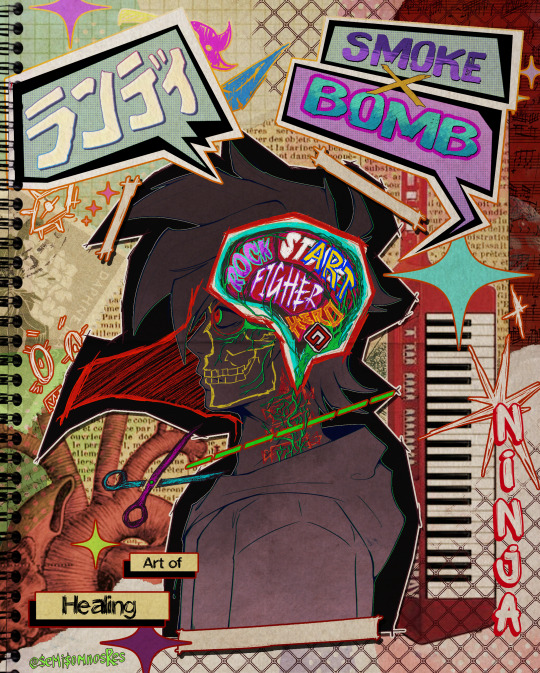
I'll try to throw in a little bit of lore
A mysterious disease that only the Norisu clan could resist at the cost of their lives. Unfortunately, it was not possible to completely eradicate it and it terrorizes the city to this day, and only a ninja, thanks to the mask, can fight monsters without being absorbed by this filth. The disease is called the “Sorcerer’s Curse”; in ancient Japan it was believed that all illnesses and misfortunes were the fault of demons/yokai/punishment of the gods and other evil spirits. It all started with the fact that one of the first infected was mistaken for an evil sorcerer who cast a curse on everyone, which was completely wrong, but rumors spread like wildfire, and somehow, imperceptibly, this name stuck. (The First already has a shitload of things to do, he is one of those people who, if he could, would not blink so that he could work more, but coming up with an adequate name and then accustoming people to it is clearly not what he wants to spend his time on.)
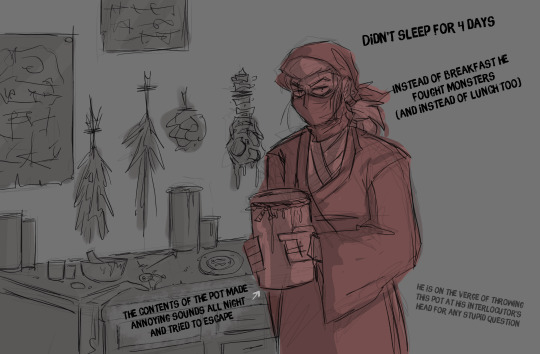
Mutated beasts appeared just as unexpectedly along with the infection. Ugly, evil, hungry creatures, wreaking chaos and eating everyone they find. They usually live and hunt in their own territory, but at the same time they have the audacity to sneak into the city to hunt. The curse had a strong impact on the environment, poisoning the land for years and changing it over so many years so that some places resemble nightmares. (For example: Trees that look like a trypophobic hell, boiling swamps where even the steam burns to the point of pain, living pieces of meat growing straight from the ground and other delights that an adequate person would not want to see in person)
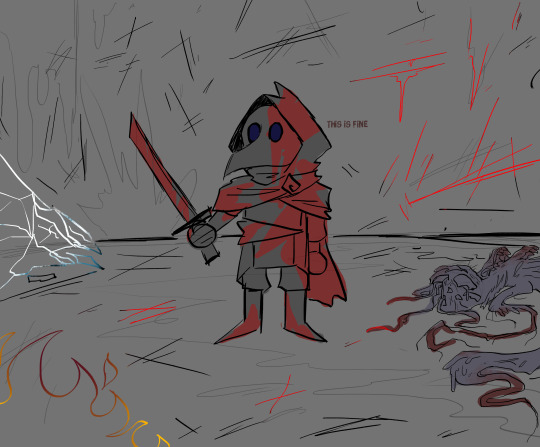
It’s relatively safe within the city, except for moments of monster attacks (which a ninja can handle) and shitty weather: hail of icy needles, acid rain season, etc. This is already common and people have adapted to such conditions over so many years. But there are also truly dangerous places where only a ninja or a complete idiot would go. (the level with the swamp from Dark Souls says hello)
From time to time, Randy has to go there voluntarily (forcibly), because only there can he get ingredients for some drugs (like those cones for creating smoke bombs) Infected people - It is quite easy to distinguish from animals - by preserved human features, personal belongings, hair, and the ability to speak humanly (but usually it turns out something incoherent, or the infected person repeats the same word) Over time, their consciousness and body will change more and more: they will begin to forget about themselves, become more aggressive and experience constantly incessant pain from body deformation and insatiable hunger (The speed of development of the virus depends on the person, some can retain their sanity and control over their actions to the last, while others They immediately break down and begin to attack those around them)
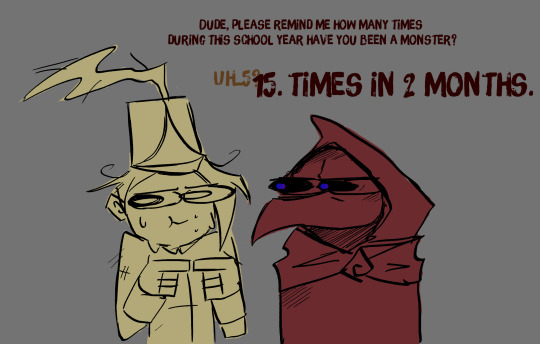
Although there are difficult situations, it will be possible to reverse the transformation, but there is an exception. - if they eat a person, or simply taste blood, then they are immediately classified as beasts and belong to extermination. (there is another point of infection, which I will talk about a little later). As in the canon, they are also called Abominations, but for a slightly different reason. In origa, their breath simply stinks, here the unpleasant odor appears due to the decomposition of cells by parasites. They smell like rotten meat in swamp soil and metal.
Logically, I decided to make changes in the approach to battles. (combat medics) They also use weapons/magic, etc., but in the original the ninja has a choice of how hard and how deep he will push the nunchucks into someone’s insides, there are more choices of poisons and types of heals.
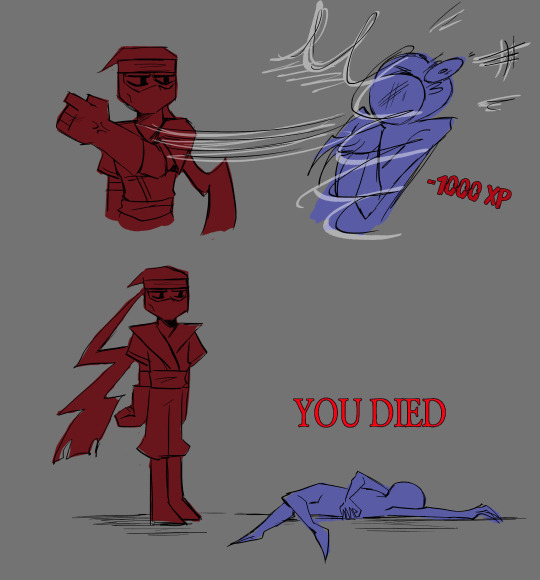
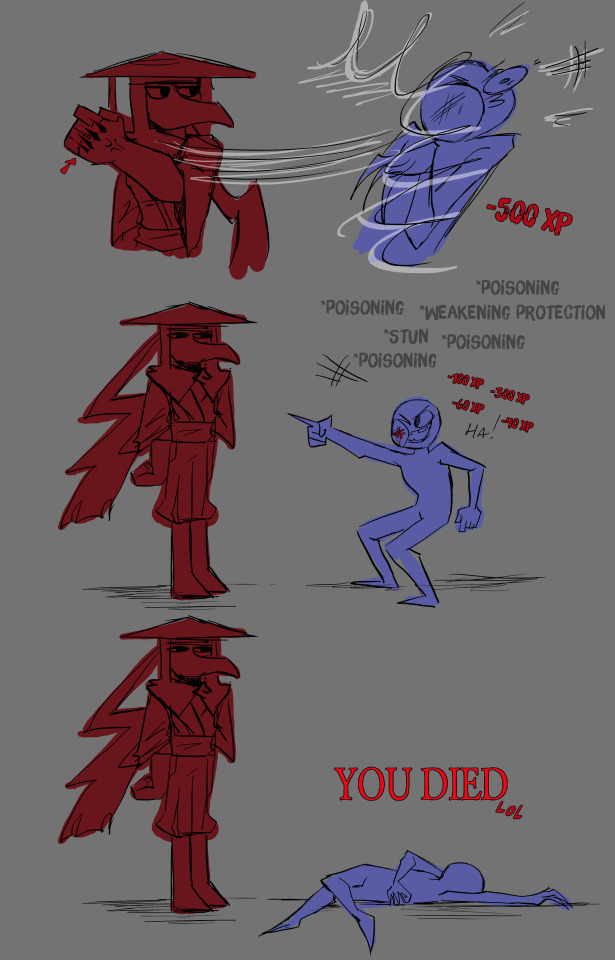
Another idea is that it depends on the character of the ninja whether the treatment will be painless or even the feeling of an injection will be the same as being hit with a knife
And I will mention a person who has an important role in the city - McFist. As a true smart-ass capitalist, he managed to make money from the epidemic. (And more precisely, selling all sorts of devices for home protection, umbrellas against acid rain, alarms, etc. And his second profitable industry is the funeral home) Not to say that he is a straight-up villain here, he rather has the vibe of an annoying neighbor. It infuriates him that a ninja, in the heat of fulfilling his duties, can (accidentally) ruin some of his stores, and the ninja is annoyed that it’s up to him to clean up the consequences of some of his awesome ideas (for example, he will build a plant right near the borders of the city, where in the end the pipeline became for monsters highway directly to the city sewer system.)
#semisomnosres#rc9gn#randy cunningham 9th grade ninja#randy cunningham#randy cunningham 10th grade plague ninja au#rc10gpnau#again the translator does all the work#I can imagine Randy trying to pull a man out of the mouth of a mutant#like a dog owner when he saw that his pet was holding something in his mouth#rc9gn au#rc9gn first ninja#first ninja
217 notes
·
View notes
Note
your posts about speculative vampires are so much fun and have inspired me. I’m gonna make a slug or some other sort of mollusk that is a leech for my oc world. Like, does a scrape with a beak or radula, then attaches with mucus and absorbs the blood through skin? Idk the realisticness of this. Point is I’m having a lot of fun thank you tumblr user bogleech
It's highly realistic, because it exists! ...Just not on land yet!
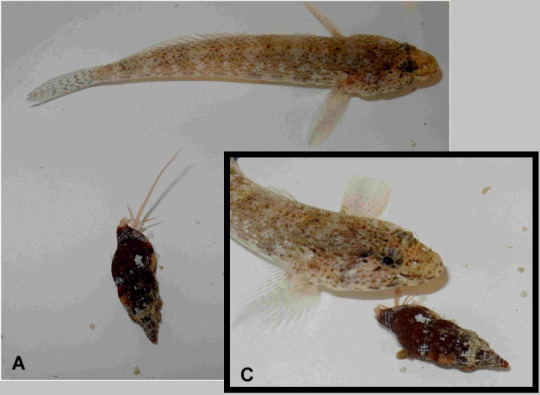
There's a few different sea snails that drink the blood of fish while the fish are asleep or otherwise distracted, always with a really long proboscis, and they do use a specialized radula to drill through the scales and flesh! This species Colubraria reticulata also has a crazy number of different toxins it injects! It has an anesthetic and an anticoagulant, which are common to vampiric animals, but it's not strong enough to really "suck" the blood out so it also has a drug that raises blood pressure, which means as Tommy Leung's Parasite of the Day puts it the fish's own body pumps the blood INTO the snail! It also has a compound that temporarily impairs healing because fish can close up wounds THAT fast, and finally, it has a venom similar to that of cone snails, but not enough to be deadly; only enough that it probably just keeps the fish sleeping deeper :) I wish there was a vampiric slug, in the ocean or otherwise, but I don't know of any! I don't know why!
435 notes
·
View notes
Text
WYD WHEN DA GANG PULL UP?! - Go dumpster diving, most likely kjfdghk (silly)
Hehe so many sillies!!! And many sillies making new friends, yippee!!! Thank you for drawing them!!!
drew some stuff involving my sillies + @smalltimidbean 's clone ocs :D
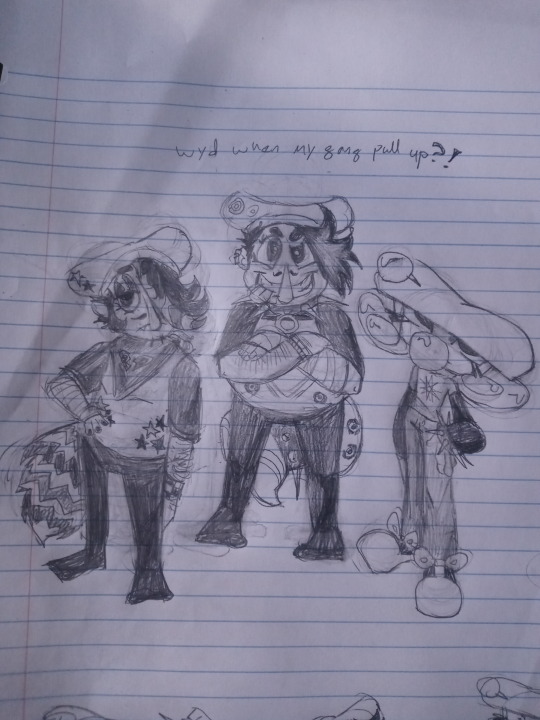
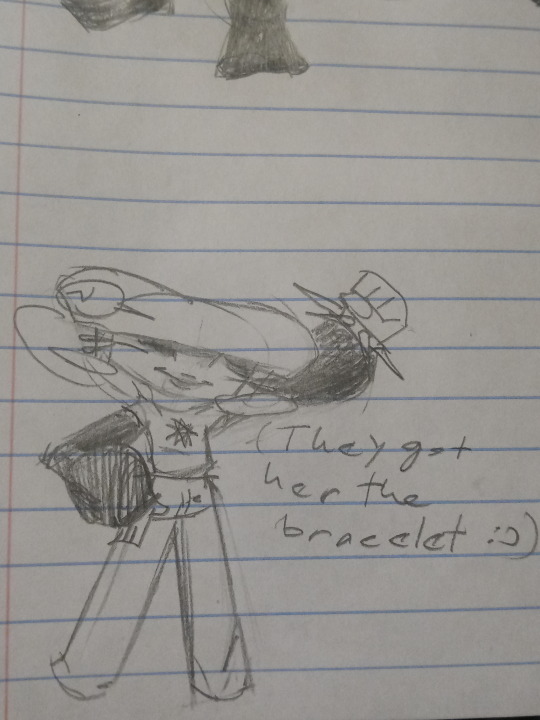
ive been meaning to draw those two for a while,,, + I think Babs would get along with them :]


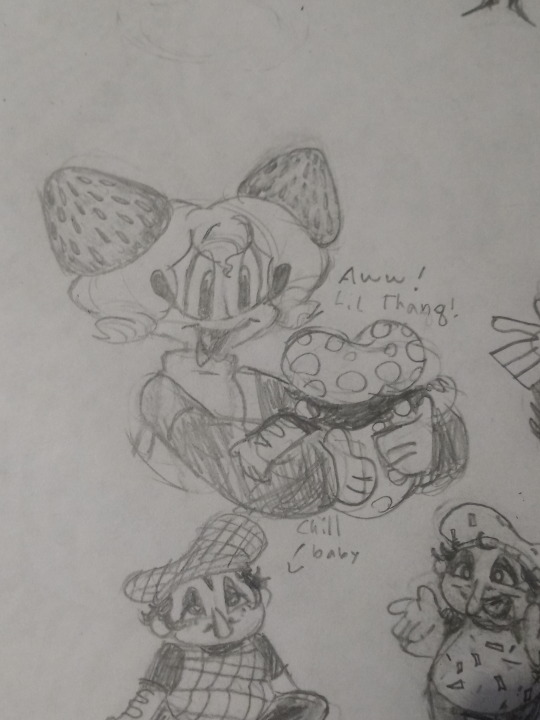
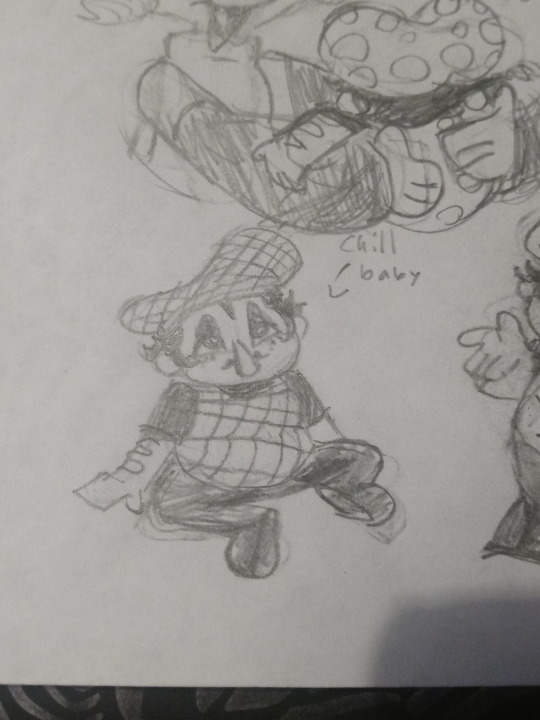
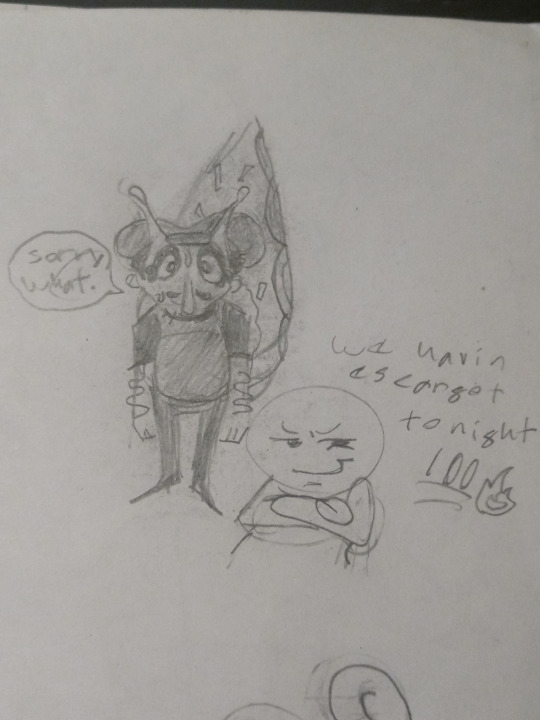
I love the dessert-themed clones so much <3 they all seem so sweet !! (Pun Intended)
#fanart#other people's characters#OC: Licorice the Peppiclone#OC: Lollipop the Peppiclone#OC: Sundae the Fake Peppino#OC: Sprinkles the Fake Peppino#OC: Mallow the Fake Peppino#OC: Waffle Cone the Fake Peppino#I am glad you added in their tank top markings in or I would not be able to tell any of the babies apart kjfdglkfg#OC: Éclair the Fake Peppino#would not recommend eating Éclair tho!!! she might be dessert themed but she is venomous!!! she's a cone snail not an eatin snail!!!#also clone matter is parasitic if a non clone being eats some but shhhhhh#okay thank you for the cute arts again!!!
21 notes
·
View notes
Note
"we'd like to see Kuri naked. please."
whip-pans to a photograph of kuri shaven bare bc she had many parasites at some point.
like think of that photo of a husky shaven bare bc the vet had issues with getting ticks off of him bc of how thick the fur was
Kuri canonically gets a lion cut when she does chemo for easy bathing. Wears a cone and everything
58 notes
·
View notes
Note
Hey
I wrote the following bellow ages ago on a Discord server I'm in
Wanted to get your thoughts on my observations around Cazador's demise, if possible
"For all their wealth, power, & influence, true vampires are incapable of any real happiness
Whether that's from the nature of their true Vampirism or from having been tortured as spawn themselves, or both even, they're clearly suffering
Which wouldn't in itself warrant what I'm about to say next
But, because true vampires tend to get off on hurting those beneath them, be they spawn or mortals (not accounting for blood drinking imo. As far as I'm concerned, I can't really fault a vampire, spawn or otherwise, for needing blood anymore than I can fault a lion for needing meat), I can't help but come to the conclusion that the kindest thing you can do for a true vampire, & for the people they're terrorising, is to basically eliminate them
Not a nice conclusion to come to, admittedly
But, the fact is, they won't stop hurting people until they are stopped
Sometimes the world is made a better place when certain people (especially dictators & tyrants) are no longer in it"
It's not a conclusion I'm comfortable with tbh, It's admittedly a very dark one to cone to
Especially knowing there was a time Cazador could have been saved, once upon a time, but that it's now passed
But, I wanted to get your thoughts on this
I believe it's a thought-provoking contribution. It’s a complex and painful reflection that touches on multiple themes and presents us with an ethical choice. It almost echoes the question the Withered One poses to Tav/Durge at the beginning of the adventure: “What is the worth of a single mortal life?” At first glance, it seems easy to answer—of course life matters, and all lives are equal and deserve to be lived. But what happens when we speak of a monster? And not a "monster" like a vampire spawn such as Astarion, who is, in many ways, still “innocent,” a mere instrument in the hands of a master who owns him body and soul.
It’s a question that challenges beliefs and morality, even the most steadfast ones, and yet demands a clear stance and a sense of responsibility.
The analogy between pureblood vampires and tyrants is powerful because it touches a universal theme: corrupted power and the systemic violence it breeds. Cazador, in particular, is not just a predator by biological necessity, but a sadist who takes pleasure in absolute control, in torture, in the erasure of another’s identity. He is an executioner, not by nature alone, but by repeated choice. As you said, he’s far beyond the lion that feeds out of hunger. And that’s precisely why Astarion’s ascension crosses that thin line between necessity and monstrosity—because that’s where the choice becomes heavy and leads to the suffering of thousands of souls through a deliberate, conscious act. An act that makes him, in every essential way, just like Cazador.
This is meant as a moral weighing of the scales, before anyone jumps in to say “but AA is different from Cazador, he loves Tav/Durge, he’d never torture them”—that’s not the point I’m making.
Saying that “eliminating him is the only truly kind act” isn’t a glorification of violence, nor an excuse—it’s an ethical stance against a structural, irremediable evil. It’s a reflection on the responsibility to end the cycle of abuse when the abuser not only shows no remorse but continues to inflict pain as an act of will.
Moreover, as you said, true vampires (as Astarion defines them) are incapable of real happiness. And here, I’ll take a small detour into the broader cultural imagination of the vampire—a figure that’s existed in global folklore for centuries. In virtually all interpretations, vampires are the dead who need the life essence of the living—blood—to “survive.” They’re parasites, in direct violation of the natural order. In some readings, especially through a Catholic lens, vampirism takes on the characteristics of a punishment. A divine one, even—meant to bring suffering to those afflicted.
Hence the widespread belief that vampires fear crucifixes, burn in holy water, are harmed by blessed weapons, and so on. But even if we step away from that perspective, we can still see how vampirism is understood in broader literature as a condition that inevitably leads to suffering. We can grasp this even through simple reasoning and common sense.
Eternity is a curse: the world changes, vampires don’t—or not easily. The people they care about die, one after the other, over time—if they ever manage to find someone to care about. Boredom, the stagnation of their condition—they’ve done, seen, and said everything. The absence of sunlight, of their own reflection, the constant hunger. They are stuck, forever, in a liminal state—neither living nor dead. Damned to wander the earth without ever being able to move on (and here we circle back, slightly, to the Catholic idea).
Anyway, all this is to say that vampirism can be seen as a true curse—a kind of hell on earth from which there is no escape... unless, of course, one is killed. So ending Cazador’s life could also be interpreted as an act of kindness—even from this angle.
And no, I don’t believe ascension can “fix” any of these aspects—except maybe the more material ones like reflection, sunlight, and hunger. But as for inner peace? I see little hope. In fact, realizing that even ascension can’t bring peace to a vampire must be a crushing blow. Just as money doesn’t bring happiness (nor fame or success), neither do “things.”
And in fact, Cazador—who has everything Astarion thinks matters: wealth, status, and power—says:
“These deathless dreams hold memories of a mortal life once-forgotten. Of the boy I was, the man I became, the monster that will not end. I sleep, but cannot rest. I live, but cannot die. I’m eternal, and I grieve.”
The message couldn’t be clearer.
But let’s take a closer look at what he says: deathless dreams—this means he keeps having them, over and over again, every time he closes his eyes. They’re deathless, after all; he can’t get rid of them. And what do they do? They hold. A beautiful word, one that somehow suggests care, even a certain gentleness. And what do they hold? The memories of his mortal life. It’s heartbreaking. He mourns the boy he was, the man he became… in favor of the monster. The one that will not end. He knows perfectly well that this last part is the strongest, the most pervasive, the one with no end—swallowing him whole.
That’s why he sleeps, but cannot rest—because the memories of who he once was torment him. He regrets who he used to be. He is "alive," but even if he wanted to end it all, he can’t die—he’s forced to drag himself through this non-existence. He’s eternal… and that’s why he grieves.
I’d say there’s little more to add… it perfectly conveys just how horrible his condition is, and how he’s willing to do anything to change it—without realizing that every attempt is futile and will only serve to feed the monster that will not end.
God, how much pity I feel for him…
This without even bringing in the D&D lore, which portrays vampires as distorted and sick in their perceptions, emotions, and feelings. But I believe that an eternity of suffering would slowly, inevitably, turn even the most virtuous, pious soul into something entirely different.
At the same time, recognizing that there was once a time when Cazador could have been saved is important. Because it shows that no one is born a monster, and that the system which produces violence—even in abusers—is real. And this applies to the real world as well. But when the chance of salvation becomes impossible even to imagine for someone who’s fallen that far, perhaps the most compassionate act is no longer forgiveness, but the liberation of those who suffer from their actions.
In this sense, your conclusion is harsh but deeply self-aware. It doesn’t romanticize or justify. It reckons with the moral weight of saying: “You cannot remain—because you continue to destroy those who still have a chance to live.”
It’s tragic. And it’s profoundly human.
Thank you for giving me the chance to reflect on these themes. <3 I hope I wrote in a way that's understandable! xD Sometimes my translations feel a bit messy to me…
44 notes
·
View notes
Text
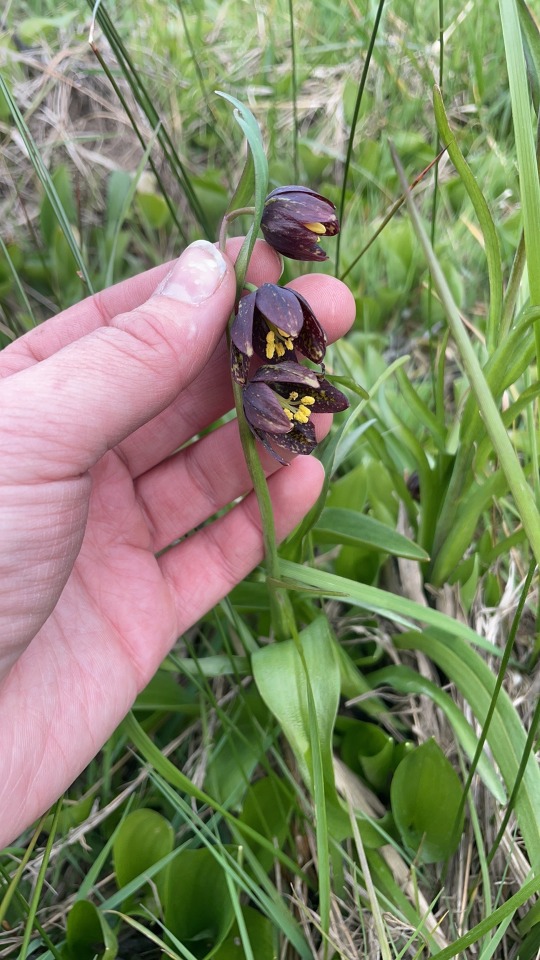
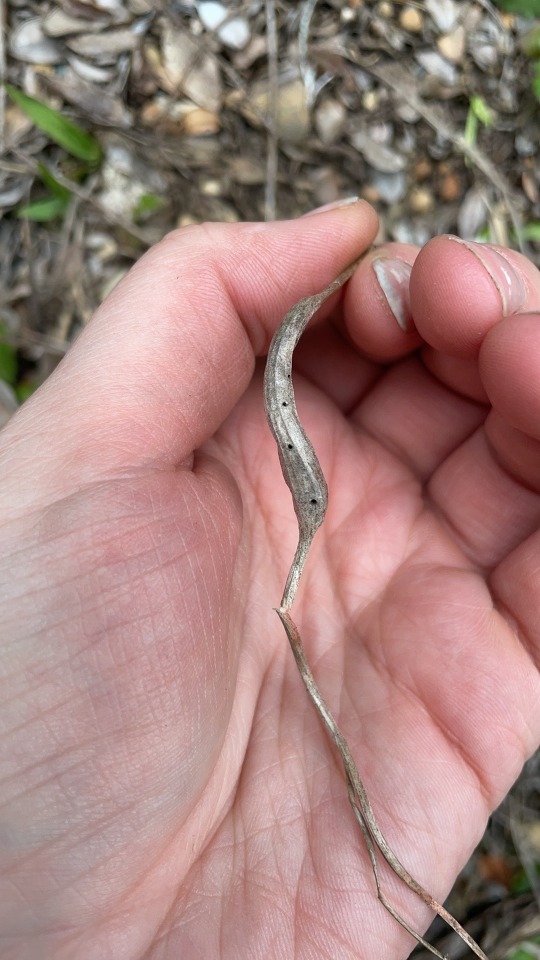
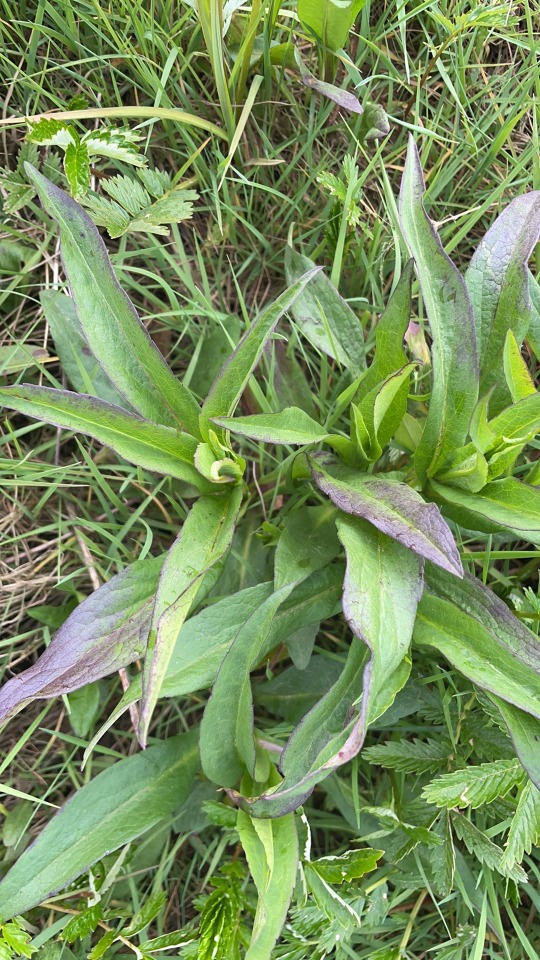


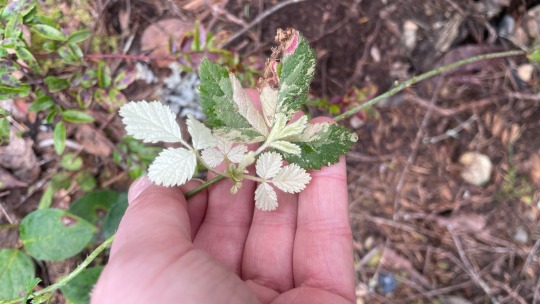

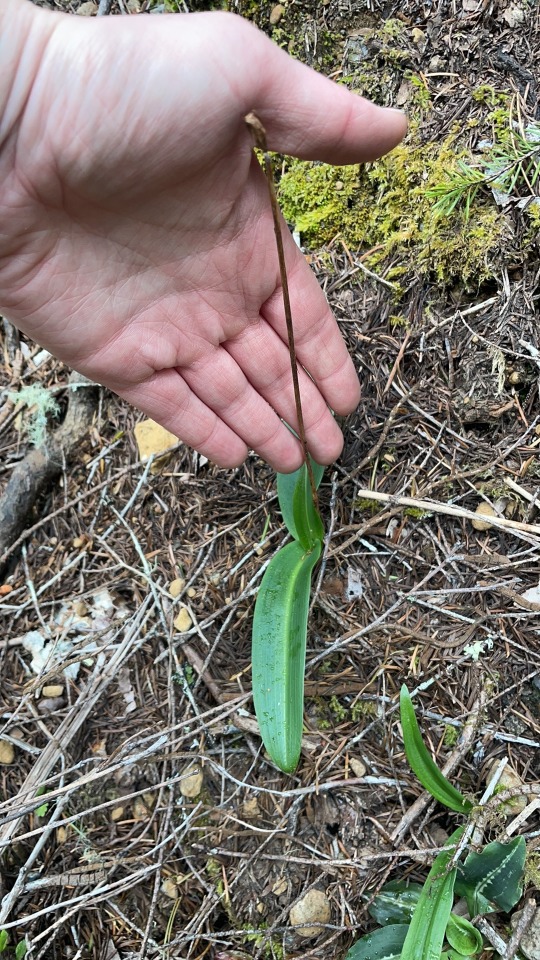
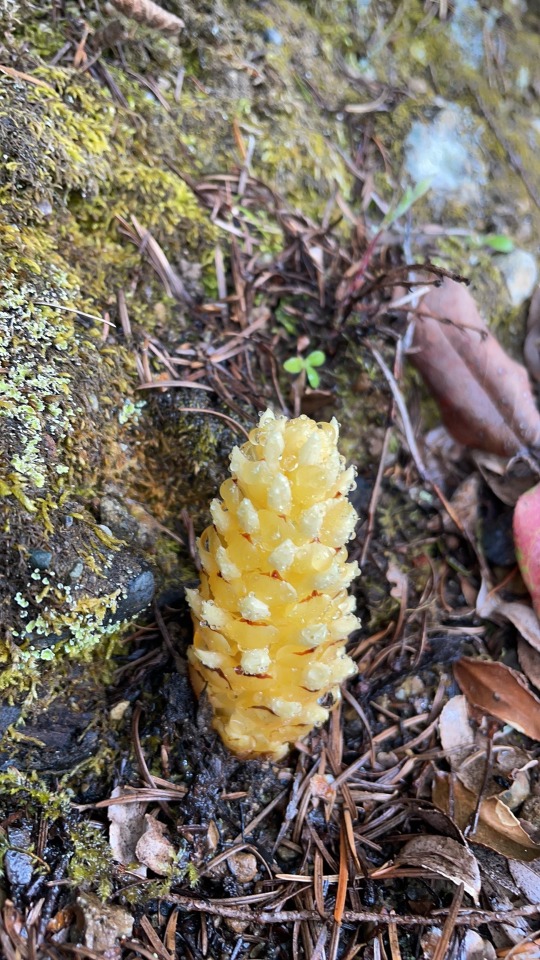
From today!
Left to right: either a chocolate lily or a speckled (probably the latter), a gall (I got an ID on it but idr), aster (not blooming but maybe soon?), pacific sideband, a big carpenter ant (a guard/drone), variegated trailing blackberry, beetle, dense flowered rein orchid (finally got an ID!!), ground cone (parasitic plant)
178 notes
·
View notes
Text






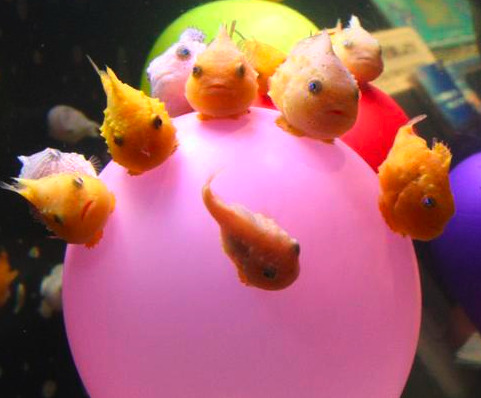



Eumicrotremus orbis, better known as the pacific spiny lumpsucker or pacific spiny lumpfish is a species of bony fish in the family Cyclopteridae which inhabit the Northern Pacific coast of North America from Washington state, to the Aleutian Islands of Alaska, as well as the Bering Sea, the Chukchi Sea, and around northern Japan. The tend to be found in near shore waters up to 500ft (150m) in depth, where they dwell around eelgrass beds, rocky reefs, kelp patches, bays, ship wrecks, docks, harbors, and other aquatic structures. They tend to live alone or in small groups and feed upon various slow moving invertebrates such as worms, small crustaceans, and mollusks. They are even know to occasionally pick the parasites off other fish, a behavior that has lead these lumpfish along with there relatives (particularly the atlantic lumpsucker) to be kept as a form of biological parasite control on fish farms. Pacific spiny lumpsuckers are themselves preyed upon by cod, sablefish, sculpins, and lancefish. Reaching 1 to 7 inches (2.5 to 18cms) in length, Pacific spiny lumpsuckers are a globular-shaped fish with a wide mouth, large lips, protruding eyes, squared dorsal fin, rounded caudal fin, and thin, transparent pectoral fins. The lumpsucker's pelvic fins have evolved into a large, fringed suction cup, allowing it to attach to surfaces like rocks or kelp. This sucker also compensates the fish for its lack of gas bladder, also they are poor swimmers they tend to set motionless and use camouflage to avoid detection. They do not have scales, instead the body of the fish is covered in cone-shaped plates, called tubercles. They may vary in color from green to yellow to brown to red to orange. Spawning occurs in shallow warmer waters from July to October with females laying around 200 orange spherical eggs in a sheltered hole. After the eggs are laid they are guarded and cared for by the male until hatching some 3 to 8 weeks later.
#fish#pleistocene pride#pliestocene pride#lumpfish#lumpsucker#marine life#animal facts#pacific#pacific spiny lumpsucker#pacific spiny lumpfish
30 notes
·
View notes
Text
Phylum Round 1
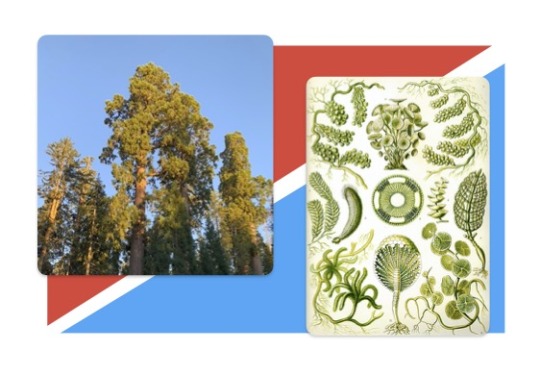
Pine Trees vs A Different Type of Green Algae!
Pinophyta or Coniferophyta (conifers): pines, firs, spruces, sequoias, cedars, junipers, larches, cypresses, kauri, yews — if it has cones and needles rather than leaves and fruit, it’s probably a conifer! (Other gymnosperms — plants that bear seeds but not fruit — are the cycads, the ginkgo-like plants, and the gnetophytes.) Most are trees, but some are shrubs; conifers are especially prominent in boreal forests near the Arctic Circle, which store 1/3 of Earth's terrestrial carbon.
Chlorophyta (big category of green algae less closely related to land plants): I wasn't sure I was going to have anything interesting to say about these guys, but I was so wrong! With over 4,000 known species, chlorophytes are extremely diverse. Most live in fresh water, but some live in the ocean or on land. Some live in extreme environments, like deep sea hydrothermal vents, hypersaline lakes, deserts, and the arctic. Some have mutualistic relationships with animals like mollusks or sponges or cnidarians, and others have mutualistic relationships with fungi, forming lichen. While plants are known for being autotrophs (creating their own food), some chlorophytes are heterotrophs -- they get their nutrition from other organisms, either as parasites or otherwise. Some are pathogens.
#Pinophyta#Chlorophyta#I am deeply regretting putting these two against each other in round one#plant taxonomy showdown#battle of the plants#phylum round 1#phylum#plant bracket#tumblr bracket#bracket tournament#poll bracket
158 notes
·
View notes